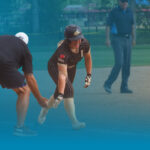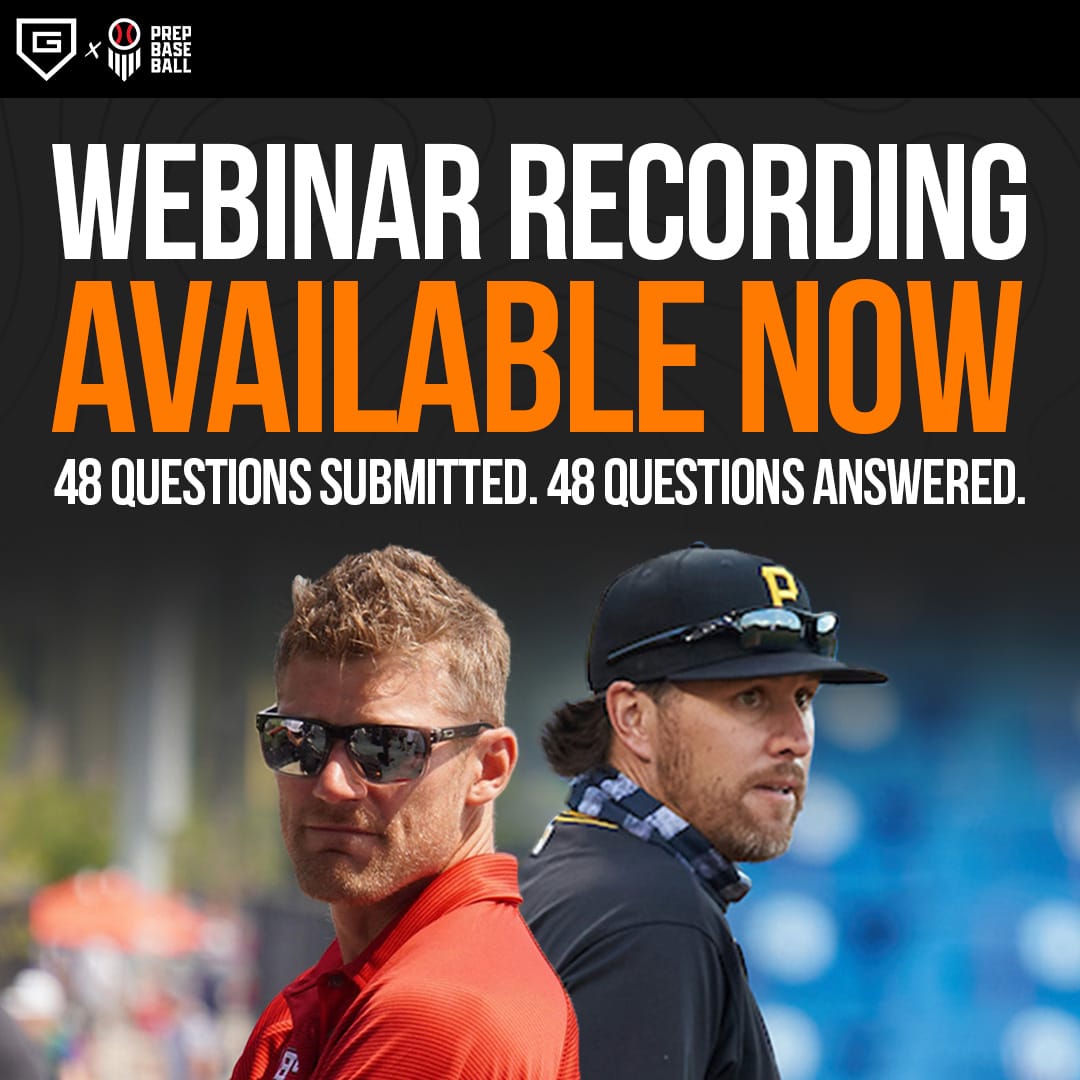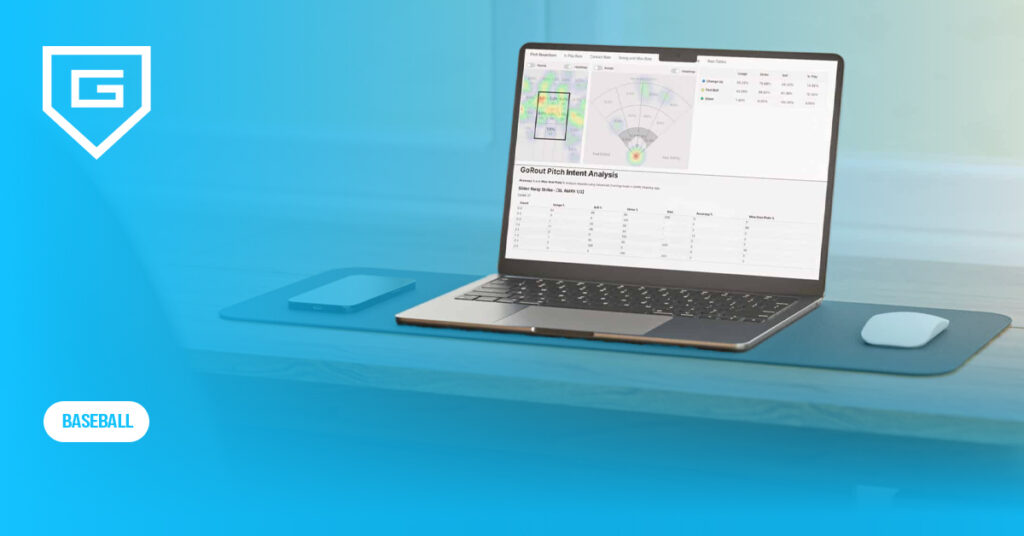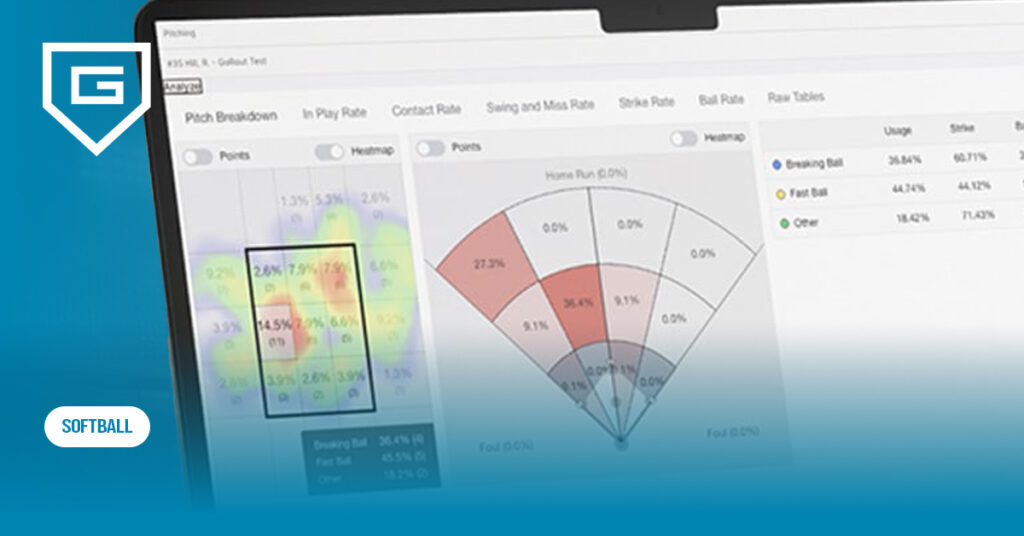How to Build a Winning Youth Baseball Training Program in 2025
Reading Time: 12 minutes
Reading Time: 12 minutes
A strong youth baseball training program can seriously change how your team grows and performs. If you want your players to sharpen their skills, work well together, and enjoy the sport, you’ll need a plan that fits their age and level.
Good programs keep kids motivated, teach the basics, and help them build habits for future success. On the flip side, a weak training program can lead to confusion, slow skill growth, and even make players lose interest in baseball.
You don’t want your team missing out just because they didn’t get the right support or structure. This article digs into what makes a “winning” youth baseball training program and gives you ideas you can try out right away.
You’ll see how to organize practices, pick drills that work, and create a positive environment where every player can grow.
The Importance of Youth Baseball Training Programs

Starting with a strong youth baseball training program lets you build basic skills and a love for the game. Players get more excited to show up when practices are fun, organized, and focused on learning.
These programs do more than just teach throwing, hitting, and catching. They give kids a place to grow, work with others, and pick up important life skills.
Key goals of a strong youth baseball training program
- Teach safe and correct skill development
- Build healthy habits and keep players ready to compete
- Help players understand and enjoy teamwork
- Focus on long-term growth, not just winning games
- Keep practices fun and positive to retain players
Train regularly, and you’ll see confidence and teamwork rise. Coaches have a major role in youth baseball now—they’re not just teachers but also role models.
Good coaches use clear practice plans, set expectations, and give feedback. They also encourage effort and make sure everyone feels included.
If you want more on coaching, check out this guide for how to coach youth baseball.
If you use a structured approach, you help players grow both on and off the field. For more training tips, visit this guide on youth baseball training.
Understanding The Needs Of Youth Athletes
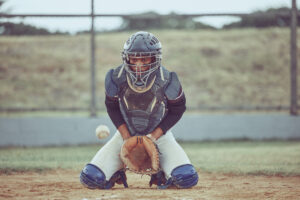
When you coach young athletes, knowing their basic needs helps you build a better training program. Kids are growing fast, both physically and mentally. They need activities that fit their age to stay safe and have fun.
Physical development in youth athletes can vary a lot, even on the same team. You might have players shorter or weaker than their teammates, which can impact their roles and performance on the field.
Psychological development is equally important. Kids might feel pressure to win or worry about making mistakes. Encouragement builds their confidence and helps them keep a good attitude about baseball.
If you understand what young athletes need, you can build a program where every kid participates and improves.
Creating A Safe And Effective Training Environment

Safety and structure should come first in youth baseball training programs. The right rules and methods help everyone feel comfortable and ready to learn.
Safety protocols matter every time you train or practice. Always use equipment that fits, keep it in good shape, and check the field for hazards before starting.
Remind players to wear helmets when batting and catching, and make sure everyone stays hydrated, especially on hot days. Create safety guidelines by sticking to age-appropriate drills and cutting out risky play.
Set clear expectations from day one so players know what you want. Talk to your team about being on time, listening to coaches, and showing respect for each other.
Build a team culture on encouragement and fair play. Focusing on inclusivity means every player feels like they belong to your team.
Warm-Up And Injury Prevention For Youth Baseball

Before practice or games, a good warm-up gets players’ bodies ready. You also lower the chance of injuries by sticking to a routine every day.
Moving in different ways gets athletes’ hearts pumping and warms up their muscles.
Dynamic warm-up ideas
- Jog or skip lightly for 3-5 minutes
- Arm circles and leg swings
- High knees, butt kicks, and side shuffles
Try dynamic stretches before static ones.
Basic stretching and mobility exercises
| Muscle group | Example stretch |
| Shoulders | Arm cross stretch |
| Legs | Quad and hamstring holds |
| Back | Cat-cow stretch |
Focus on smooth, steady stretching. Hold each stretch for about 10-20 seconds. Don’t bounce or rush.
Good training programs include proper strength work, warm-ups, and safe pitch counts to protect young arms. Balance training also helps since it lowers the risk of falls or awkward moves, and gives players more control over their movements.
Building A Strong Foundation: Fundamentals First

Starting with the basics helps youth baseball players build confidence and learn the right way from the start. Kids pick things up faster when you break each skill into simple steps and let them practice often. A good way to teach is by mixing short lessons with hands-on practice.
The more players repeat these basics, the better they’ll get.
Pick equipment and drills that fit the players’ ages and skill levels. Switch up drills to keep things fun and fresh. Try group games that add a bit of competition but focus on learning, not just winning.
Read our guide for more ideas for youth baseball practice drills with clear instructions.
Baseball-Specific Skill Development

Building good habits early on pays off as the season goes on. It’s really that simple. Using age-appropriate youth baseball drills can make learning these skills more fun and keep kids interested.
Hitting begins with the right stance and knowing how to use the bat. Work with your players on making contact, improving bat speed, and finishing their swing.
Try simple drills to sharpen swing mechanics. If you need more ideas, check out some hitting drills for young athletes.
Throwing needs proper form and mechanics. Show them a four-seam grip and break down the throwing motion step by step to keep their arms safe.
Fielding takes quick hands and smart footwork. Run grounder drills, pop fly practice, and reaction exercises on a regular basis.
Remind your players to focus on mechanics first. Keep eyes on the ball, use two hands, and throw with accuracy.
Position-Specific Training For Youth Baseball Players
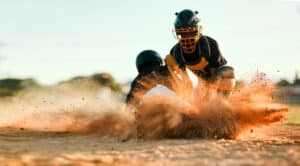
Every position in baseball calls for something different.
Pitchers need arm strength, accuracy, and routines that keep them healthy. Practice throwing mechanics and limit pitch counts to protect their arms. A training program should incorporate recovery exercises for pitchers after they throw, like light jogging and targeted stretching, to keep their arms rested and healthy.
Catchers rely on strong legs, quick hands, and serious focus. Practice blocking low balls and fast transfers, and make sure they always wear their catcher’s gear the right way to avoid injuries.
You can also use advanced baseball gear to improve pitcher and catcher communication.
For infielders, quick reaction drills and ground ball routines are the name of the game. Practice throws to every base and get used to calling out plays.
Outfielders need to be quick and good at tracking fly balls. Work on drop steps, sprints, and safe catching techniques.
Check out these outfield drills for youth baseball. They can help you boost your players’ range and reaction time.
Meet GoRout Diamond For Youth Baseball Training Programs
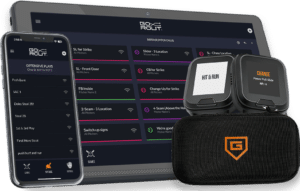
GoRout Diamond is a baseball pitch calling system that gives you a fast, digital way to communicate on the field and improve the team’s performance. You can send pitch calls, defensive shifts, bunts, and more to every player with just one tap.
How it works for coaches
- Build and customize your offensive and defensive plays in the intuitive web app
- Employ the on-field app to send play calls instantly to players—no setup, WiFi, Bluetooth pairing, or syncing required
- Use up to 140 characters per position-specific message, far beyond the 10-sign limit of other systems
- Generate post-game reports and identify real-time performance trends with pitch intent vs. result data
How it works for players
- Each player gets an electronic pitch calling wristband that lights up with calls as soon as you send them
- Devices stay visible in sunlight or at night, and work in all weather and environmental conditions
- Devices are lightweight, durable, and intuitive—players simply glance at their wrist to know exactly what to do
- All communication is private, secure, and encrypted
- No more missed or mixed-up signals—what you send is what they see
Standout benefits of GoRout Diamond
| Feature | Benefit | Details & Impact |
| One-Touch Play Calling | Quick and simple in-game communication | Instantly send any of 140 customizable signs with a tap—no setup delays or misfires. Coaches stay focused on strategy, not signaling logistics. |
| Custom Position Messaging | Precise, role-specific instructions | Send tailored instructions to each field position—for example, “Shift 2nd base inside” or “Bunt to third”—ensuring everyone knows exactly their assignment. |
| AI Analytics | Data-driven performance review | Automated reports compare pitch calls to outcomes, highlight trends (e.g., miss-location on breaking balls), and support objective coaching adjustments. |
| Game-Ready Devices | Rugged, encrypted, weather-resistant equipment | Wearables survive rain, mud, and dust; all communications are end-to-end encrypted to prevent sign-stealing. |
| No Wi-Fi Needed | Reliable functionality anywhere | Operates over proprietary GoRout Air™ cellular network—no dependence on stadium Wi-Fi or local internet connections. |
| Long Battery Life | All-day usage, even doubleheaders | Up to 12 hours per charge with fast recharging, so devices last entire tournaments or extended practices without interruption. |
| Performance Dashboard | Real-time device and network monitoring | View battery, signal strength, and usage stats live, enabling preemptive swapping or recharging to avoid device failures mid-game. |
| Full-Replacement Warranty | Peace of mind and cost protection | 100% full-replacement warranty covers any device breakage, backed by 24/7 phone, text, and video support—no hidden repair costs. |
| Customizable Packages | Flexible scaling for any team size or budget | Start with a single coach-to-catcher NFHS-approved device or equip entire rosters; add devices or features as needs evolve. |
| Proven Adoption | Trusted by youth, collegiate, and pro programs nationwide | Used by over 10,000 teams, official system of National Championship Sports, and adopted by Power 5 collegiate programs—demonstrating reliability and competitive advantage. |
Miscommunication won’t ruin your plays anymore. GoRout Diamond eliminates coaching mistakes and keeps training sharp and efficient. Case studies and testimonials with coaches’ feedback prove this.
If you want to see how it fits your team, reach out to get a personalized quote or visit our web shop.
Strength Training For Youth Athletes

Strength training can help youngsters play better baseball. It builds their muscles, boosts their power, and makes them faster on the field.
Start with body weight training so players can focus on proper form. Exercises like push-ups, squats, and planks build a solid base without heavy weights.
Moves like Russian twists, sit-ups, and mountain climbers help strengthen the player’s core for swinging and throwing.
Agility and quickness matter, too. Try adding ladder drills, jumping, or short sprints to your workouts. These help with endurance and speed.
As each student athlete gets older and their form gets better, you can add light free weights.
Start with short workouts and take breaks. Over time, athletes’ muscles, agility, and power will improve, setting them up for a solid season.
Nutrition And Recovery For Youth Baseball Training Programs

Eating well and resting enough matter just as much as practice. A balanced diet builds strength and endurance. Young players need the right nutrients to grow and recover.
Try to include these in your meal recommendations:
- Carbohydrates (whole grains, fruits) for energy
- Protein (chicken, fish, beans) for muscle repair
- Healthy fats (nuts, avocados)
Bring a water bottle to each practice. Remind players to drink before, during, and after activity—hydration keeps cramps and fatigue away.
Getting enough sleep is huge for recovery and injury prevention. Aim for 8-10 hours a night, especially during tough training stretches.
Mental Preparation In Youth Baseball Training Programs

When you train your players’ minds to stay tough, they handle hard situations better in practice and games.
Mental toughness means they keep going, even when things don’t go their way. That grit is what makes a difference.
Ways to build mental toughness and focus
- Set a small goal for each practice or game
- Use mental exercises like visualization
- Let players take deep breaths before batting or pitching
- Make them focus on what they can control, not just the results
Tracking progress helps, too. Keep a notebook or use a checklist to jot down your goals and what you worked on.
Remind players that mistakes happen. Explain to them that they don’t need to get upset if they strike out or miss a catch—every player messes up sometimes.
Online Coaching And Support For Youth Baseball Teams
Online coaching and support give your team more ways to learn and grow. Many teams now use virtual resources to teach skills and track progress.
With platforms that offer drills and strategy, coaches can share lessons quickly. Group chats and team apps keep everyone in the loop.
These digital tools help teams stay connected outside of practice. You can send feedback, swap videos, and talk about games any day of the week.
Watch short training videos, join live sessions, or do workouts at home—even if the weather cancels practice.
Players can ask questions, get feedback, and see real game examples online. This kind of support makes baseball more personal and fun for everyone.
Performance And Sports Science In Youth Baseball
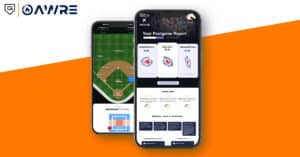
Sports science helps you train smarter, not just harder. Video analysis and slow-motion replays break down every movement so you can see what actually needs work.
Try using simple charts or tables to spot improvements in hitting, pitching, and fielding. That way, everyone can actually see how far they’ve come.
When you analyze these details, you’ll know which drills help your team. Data shouldn’t just sit in a spreadsheet. Use it to tweak each player’s plan, track stats during practice and games, and inform your strategy.
If you notice patterns or weak spots, adjust workouts and drills right away. Practice time should actually fit what your team needs, not just fill the clock.
There are some great baseball training aids for youth out there to safely challenge players at different levels.
Seasonal Camps And Clinics For Youth Baseball Players

Youth baseball isn’t just a spring or fall thing. Seasonal camps and clinics let your team keep learning and growing all year long.
In the summer, baseball camps give players a chance to pick up new skills and just have fun.
Some clinics are quick and target specific skills, while others are longer and help athletes improve all-around.
Winter clinics help keep players physically and mentally sharp in the offseason and build new skills. Look for:
- Qualified coaches
- Clear training goals
- Safe facilities
- A fun and positive atmosphere
Not every camp is a good fit for everyone. Choose one that matches the kids’ needs and skill levels.
Continuing Development And Improvement

Keeping your team motivated all year isn’t easy. Celebrate small wins, and change up drills to keep things interesting.
Fun games, skill challenges, and little competitions can make players eager to show up.
Coaches who keep learning new techniques can pass them on, making practice more valuable for everyone.
After each season, take a breather and look back at your child’s progress. Talk openly about what worked, what didn’t, and which skills still need work.
Setting new goals together helps everyone focus on getting just a bit better each time.
If your players are itching for a new challenge, think about age-appropriate competition like youth travel baseball. It’s a good way to keep development moving forward and increase the level of competition.
Creating Unforgettable Youth Baseball Experiences

Making youth baseball fun is the key to a great season. It’s not all about winning—loving the game matters more. A mix of friendly competition and teamwork keeps everyone engaged.
Ways to make baseball unforgettable
- Celebrate every achievement, whether it’s a great catch, a home run, or just trying something new
- Cheer each other on during games and practice
- Encourage making friends and helping teammates
You can play against new teams and visit different places when your team joins tournaments or travel teams. Kids learn about sportsmanship and competition and form stronger bonds.
They enjoy more game experiences and make friendships that last for years by playing baseball together.
When you mix fun, play, and friendship into baseball, you create memories that stick with your team long after the season ends.
Conclusion About Youth Baseball Training Program
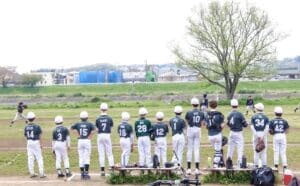
Creating a youth baseball training program takes smart planning and the right ideas. You build a stronger, safer team when you focus on skill development and player health.
Think about using a mix of drilling, fitness, and mental coaching. Encourage everyone to set clear practice schedules and track their progress using checklists or journals. These habits help young athletes stay motivated and see their growth.
It’s a good idea to keep working with professionals and learn new coaching tips each season. Stay flexible and keep looking for ways to help each player reach their best.
Team communication makes a big difference. GoRout Diamond can help your team connect better on the field, which is very important for performance and learning. Strong communication helps your plan come together at every practice and game.
Ready to take the next step? Contact us now to get a quote and start building your winning program today!
FAQs About Youth Baseball Training Program
How do you train for youth baseball?
Start with the basics. Show kids how to throw, catch, hit, and run. Use drills that fit their age, and keep things light so they actually want to come back.
How do you structure a youth baseball practice?
Split practice into short blocks. Begin with warm-ups, then rotate through skill stations for fielding and batting. Wrap up with a game or scrimmage—kids love showing off what they just practiced.
What type of training is best for youth baseball?
Mix skill drills with fun games. Practice good technique and teamwork. Make sure the drills fit their age and skill level. Try to keep things positive, so kids stay eager to play baseball.

